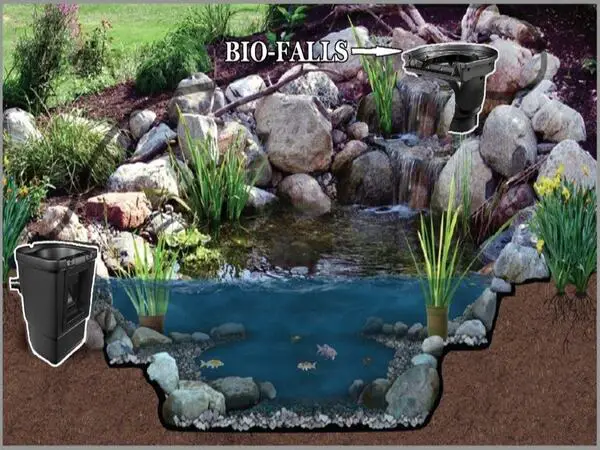Adding a koi pond to your outdoor space can bring tranquility, beauty, and a sense of nature to your home. Not only do koi ponds create a serene atmosphere, but they also provide a perfect environment for keeping and caring for koi fish. Building an outdoor koi pond can be a rewarding and enjoyable project, but it requires careful planning and execution to ensure the success of the pond and the health of the fish. In this guide, we will explore the step-by-step process of building an outdoor koi pond that will be a stunning addition to your landscape.
Step 1: Planning and Design
Before you start digging, it’s essential to carefully plan and design your koi pond. Consider the size, shape, and location of the pond. Koi ponds should ideally be at least 3 feet deep to provide adequate space for the fish to thrive. The size of the pond will depend on the number of koi you plan to keep and the available space in your yard. When designing the pond, consider adding elements such as waterfalls, rocks, and aquatic plants to enhance the visual appeal and create a natural habitat for the koi.
Step 2: Choosing the Right Location
When selecting the location for your koi pond, it’s important to choose a spot that receives a good balance of sunlight and shade. Too much sun can lead to excessive algae growth, while too much shade can inhibit the growth of aquatic plants. Additionally, avoid placing the pond under trees that may shed leaves and debris into the water. The location should also be easily accessible for maintenance and cleaning.
:max_bytes(150000):strip_icc()/KoiPond-5fe8b3a605ef4743a55dba059cfb531b.jpg)
Credit: www.thespruce.com
Step 3: Excavation
Once you have planned and designed your koi pond, it’s time to start digging. Use a rope or hose to outline the shape of the pond, and then carefully excavate the area. It’s important to create shelves or ledges within the pond to provide varying depths for the koi to swim and seek refuge. The bottom of the pond should slope gradually to the deepest point to allow for proper circulation and easy cleaning.

Credit: iowawaterscapes.com
Step 4: Installing the Pond Liner
After the excavation is complete, the next step is to install the pond liner. Choose a high-quality, durable liner that is specifically designed for ponds. Spread the liner carefully over the excavated area, making sure to smooth out any wrinkles or folds. Use rocks or bricks around the edges to hold the liner in place and create a natural-looking border for the pond.
Step 5: Filtration and Aeration
Proper filtration and aeration are crucial for maintaining a healthy environment for your koi fish. Install a reliable filtration system to remove debris and maintain water quality. Additionally, consider adding aeration devices such as air pumps and air stones to ensure that the water is well-oxygenated, which is essential for the health of the koi.
Step 6: Adding Water and Treating the Pond
Once the pond liner is in place and the filtration system is installed, it’s time to fill the pond with water. Use a dechlorinator to treat the water and make it safe for the koi. Allow the water to sit for a few days to reach the optimal temperature before introducing the fish.
Step 7: Landscaping and Finishing Touches
Enhance the beauty of your koi pond by adding landscaping elements such as rocks, aquatic plants, and water lilies. These not only create a natural and visually appealing environment but also provide hiding spots and shade for the koi. Consider adding a waterfall or a fountain to introduce the soothing sound of running water and further enhance the ambiance of the pond.
Step 8: Introducing the Koi
Before introducing koi fish to the pond, it’s important to acclimate them to the water temperature. Float the bag containing the koi in the pond for about 15-20 minutes to allow the temperature inside the bag to equalize with the pond water. Then, gently release the fish into the pond, taking care to avoid sudden changes in water parameters that could stress the koi.
Step 9: Maintenance and Care
Once your koi pond is complete and the fish are happily swimming, it’s important to establish a regular maintenance routine. This includes monitoring water quality, cleaning filters, and removing debris. Regularly check the pond for signs of algae growth, and perform water changes as needed to maintain optimal water conditions for the koi.
Conclusion
Building an outdoor koi pond is a fulfilling and rewarding project that can bring years of enjoyment and serenity to your outdoor space. By carefully planning and executing each step, you can create a beautiful and thriving habitat for your koi fish. With the right design, location, and maintenance, your koi pond will become a stunning focal point in your yard, providing a tranquil retreat for both you and your elegant koi companions.





